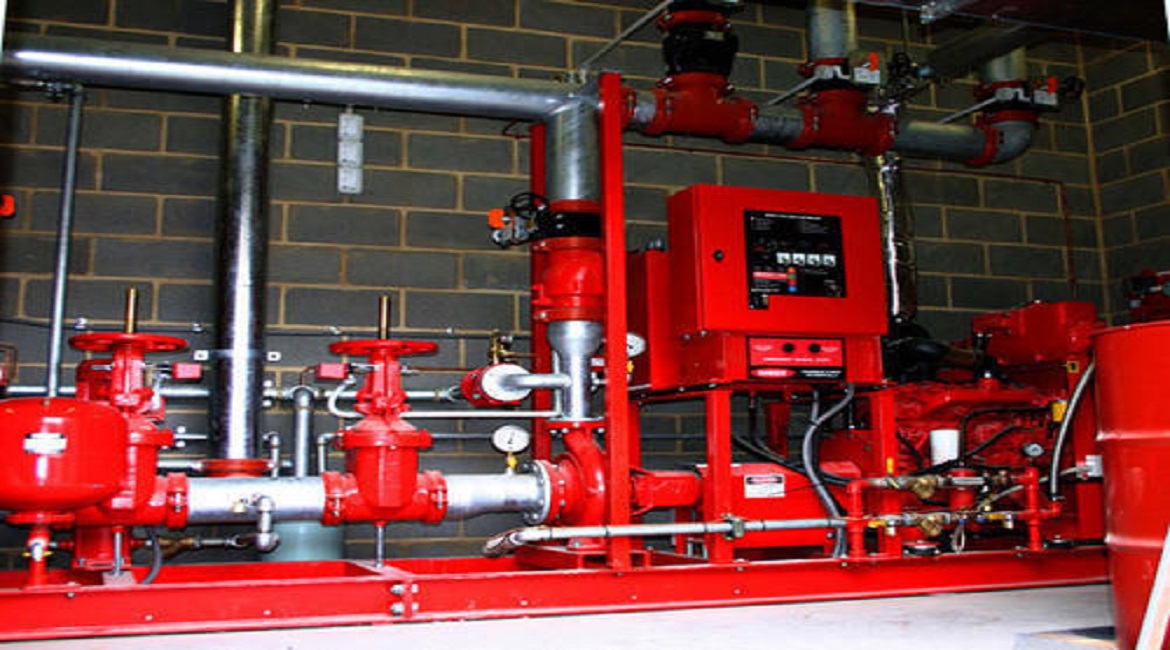Linear Heat Detection
Linear Heat Detection:
Overview
FyreLine linear heat detection provides early warning of fire or overheating equipment. Heat sensing cables are capable of detecting heat anywhere along their length and designed for use in commercial and industrial applications.
Linear heat detection is highly cost-effective and can be easily installed with, or in place of, conventional heat detectors where traditional style detection may be difficult to install or maintain or is too expensive.
How Does Linear Heat Detection Work?
There are two types of heat sensing cable available, fixed temperature and analogue:
FyreLine Digital (Fixed Temperature) Heat Sensing Cable
FyreLine fixed temperature heat sensing cable is available in four different temperature ratings; 68°C, 88°C, 105°C or 185°C.
FyreLine linear fixed heat sensing cable is constructed using two twisted and tensioned, tri-metallic conductors. Each of the conductive cables are coated in a heat sensitive polymer which, when heated to its rated temperature, melts, causing the the two cables to touch. The resulting short sends a signal to the fire alarm control panel, indicating that a fire (or excessive heat) has been detected.
Once a fire has been detected the damaged length of cable is easily replaceable.
An Digital Input Monitor Module (DiMM) can be used in conjunction with digital heat sensing cable to provide an accurate location of the point at which the alarm is triggered along the detection cable.
FyreLine Analogue Heat Sensing Cable
FyreLine analogue heat sensing cable monitors significant increases in temperature, providing both pre-alarm and alarm, and is fully resettable.
A FyreLine analogue controller and end of line unit are required in order for FyreLine analogue heat sensing cable to be fully monitored for open and short circuit.
Typical Applications
FyreLine linear heat detection is well suited to a wide range of applications, including:
· Cable Trays
Cable trays and carriers are found in every commercial building, from power stations to shopping centres, and are most often hidden in ceiling voids. Overheating cables pose a major risk of fire that is difficult to detect. Therefore, heat sensing cable often provides a suitable detection solution.
· Conveyor Belts
Conveyor belts often carry potentially combustible materials such as coal or cardboard which pose a high risk of fire. In this situation heat sensing cable, combined with addressable technology, can identify the exact location of a potential fire.
· Floating and Fixed Roof Tanks
In floating or fixed roof tanks where there is a potential fire risk, Fyreline heat sensing cable can be used around the rim of the roof to detect the early stages of a developing fire.
· Tunnels
Fires in vehicle tunnels can pose a severe risk to the tunnel’s infrastructure. By combining heat sensing cable with addressable technology, the location of a fire can be accurately pinpointed so fires can be dealt with in a timely fashion. Likewise, services or maintenance access tunnels also can also benefit from a similar fire detection solution.
· Car Parks
Due to the high risk of false alarm caused by exhaust fumes, conventional smoke detection can not be used reliably in a car park environment. Therefore, a large number of heat detectors are required to provide suitable protection. On top of this, many countries require heat proof cabling to be used to interconnect the heat detectors, making installation expensive. Linear heat detection provides a cost effective solution for this kind of application.
· Escalators
Linear heat detection can be used to detect a buildup of heat or fire in the mechanical workings of an escalator. In many countries the use of heat sensing cable is mandatory.
· Warehouse Racking
Heat sensing cable can be used in large, automated warehouse facilities to protect storage racks.
· Thatched Roofs
Thatched roofs are at risk from fire caused by hot gases escaping through cracks in chimney brick work. FyreLine linear heat detection can provide continuous monitoring of a thatched roof by placing the cable in the thatch and around the chimney.
· Waste Recycling Facilities
Waste recycling facilities often contain vast amounts of potentially flammable waste. Impromptu chemical reactions, build up of flammable gases and risk of self-combustion all contribute to a high risk of fire. Large, vulnerable storage areas, the use of conveyors and the need to pinpoint potential fires make a waste recycling facility the ideal candidate for a linear heat detection system.
· Hazardous Areas
Hazardous areas that are used to house paint, solvents, spirits and similar flammable materials require any electrical equipment, including fire detection equipment, to be either intrinsically safe or explosion proof. FyreLine heat detection can be easily made intrinsically safe, therefore proving an ideal fire detection solution for hazardous areas.
· Power Stations
Power stations contain a number of ideal locations for heat sensing cable. Conveyor belts, car parks, access tunnels, hazardous areas, computer banks, warehouse storage and many other areas make power stations one of the biggest consumers of heat sensing cable.
· Ships and Marine
Both commercial and industrial ships carry a variety of risk areas, such as galleys, car decks, cable trays, engine rooms and plant rooms, that are difficult to protect. Fyreline provides a robust solution that is available with increased chemical protection, reducing the risk of corrosion.
· Barns and Stables
Barns and stables are large, voluminous areas with high ceilings that are used to house live stock. They are at risk from combustible fodder and bedding as well as electrical and mechanical equipment. FyreLine heat sensing cable can be placed in ceilings and around fixed machinery to provide a reliable detection solution that is not affected by the chemicals and UV exposure that may be present.


